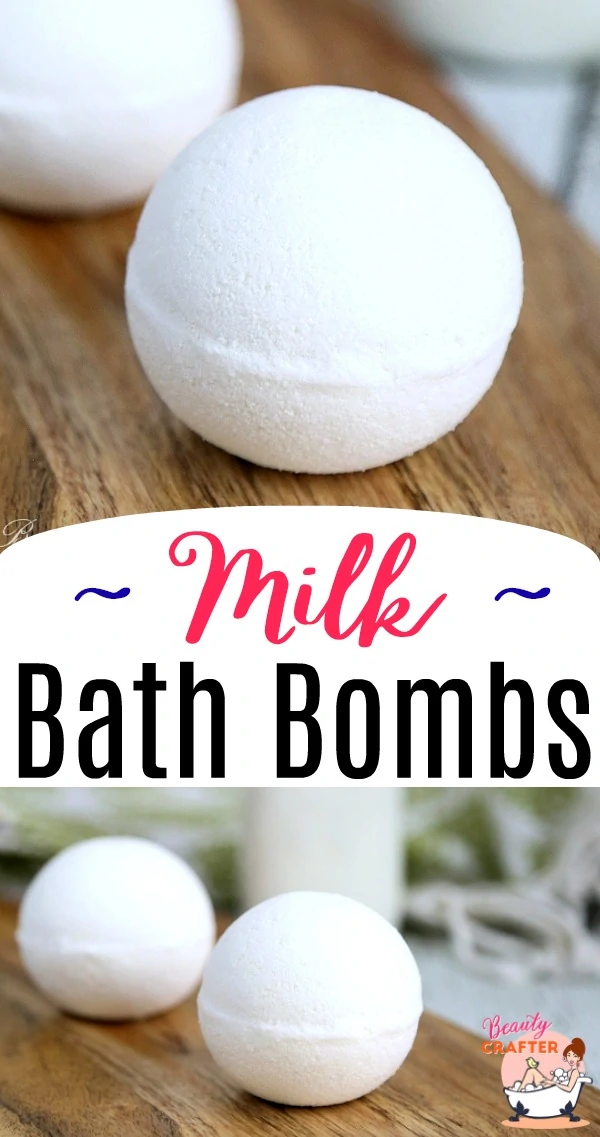Love milk baths, then why not enjoy some milk bath bombs with this easy DIY milk bath bomb recipe!
Powdered milk is a great addition to the dry ingredients in bath bombs. I'm also quite pleased with the nourishing results of adding these milk bath bombs to my baths. Here I've shared the simple milk bath bomb recipe I have been making for my daughter.
Milk Bath Bomb Benefits
Here are just some of the benefits of milk bath bombs.
- the lactic acid in milk is a natural exfoliant and skin softener
- milk also contains proteins, magnesium, calcium and vitamins A, B6 and B12 that are absorbed by the skin
- milk bath bombs are said to help with dry skin problems such as eczema and psoriasis
- milk also helps to balance your pH levels which helps to keep your skin healthy (great for sensitive skin)
- the DIY bath bomb mix is easier to form and holds together well
- they float, unlike many homemade bath bomb recipes, a milk bath bomb will float
- foaming action when dropped into a hot bath tub, they don't just fizz they also make a bubble like froth (no worries it dissipates after a little while)
- the dry milk powder doesn't leave the powdery residue cornstarch can when added to bath bombs
How to Make Milk Bath Bombs
Making bath fizzies with powdered milk is actually easier than most methods. Here is what you need to do.
Grab Your Supplies:
Here is everything you will need: citric acid, vanilla oil (or fragrance scent/essential oils), milk powder, baking soda, whisk and a metal or plastic mold.
Ajent Citric Acid 100% Pure Food Grade Non-GMO (Approved for Organic Foods) 5 Pound



Mixing and Molding
Combine all the dry ingredients in a large bowl. Whisk together well.
Then start adding wet ingredients, first the oil and vanilla oil, then slowly add water, mixing all the while. Keep as dry as you can, yet able to clump in your hand when pressed together.
Scoop into the halves of a bath bomb mold, overfilling. Press togther firmly, then gently twist off.
Allow the bath bombs to dry before sealing in packaging or an airtight container, such as a jar with a well fitting lid.
Variations on the Recipe
Here are a few simple changes that may better suit your needs.
- If you have issues with dairy milk, coconut milk powder can be used in the bath bomb mix instead.
- Goat's milk bath bombs are another option. Cansisters of powdered goat milk are readily available.
- Use witch hazel in place of the water in the recipe. It's gentle astringent properties are good for the skin.
- Some like to add epsom salts to mix for it's relaxing effect. I would not add more than a ½ cup and keep in mind you will also need a little more water to get the damp sand texture needed.
- For those who want color, add a few drops of gel food coloring or a little mica powder.
If you want more milk in your bath water, try my Milk Bath recipe. For more soothing bath bombs, my Lavender Oatmeal Bath Bombs Recipe and DIY Rose Bath Bombs are excellent choices.

Vanilla Milk Bath Bomb Recipe
Ingredients
- 1 cup baking soda sodium bicarbonate
- ½ cup citric acid
- ½ cup powdered milk
- ½ teaspoon vanilla essential oil oleoresin (or 15-20 drops of your favorite skin-safe fragrance oil or essential oil such as lavender)
- 2 teaspoon fractionated coconut oil almond oil or jojoba oil are also good choices
- 2 teaspoon water
- bath bomb mold
Instructions
- In a large mixing bowl, combine you dry ingredients; baking soda, citric acid and milk powder. Mix together.
- Add the vanilla oil and coconut oil to the dry mixture. Mix well. Then add the water while stirring. Once well mixed test to see that a gasped handful of the bath bomb mixture will lightly clump, if not add another ½ teaspoon of water, mix and try again until it will.
- Overfill each half of the bath bomb mold considerably, then press firmly together. Gently remove the mold and set the bath bomb aside to dry out.
- Once dry store in an airtight container or shrink wrap bags.
Notes




























